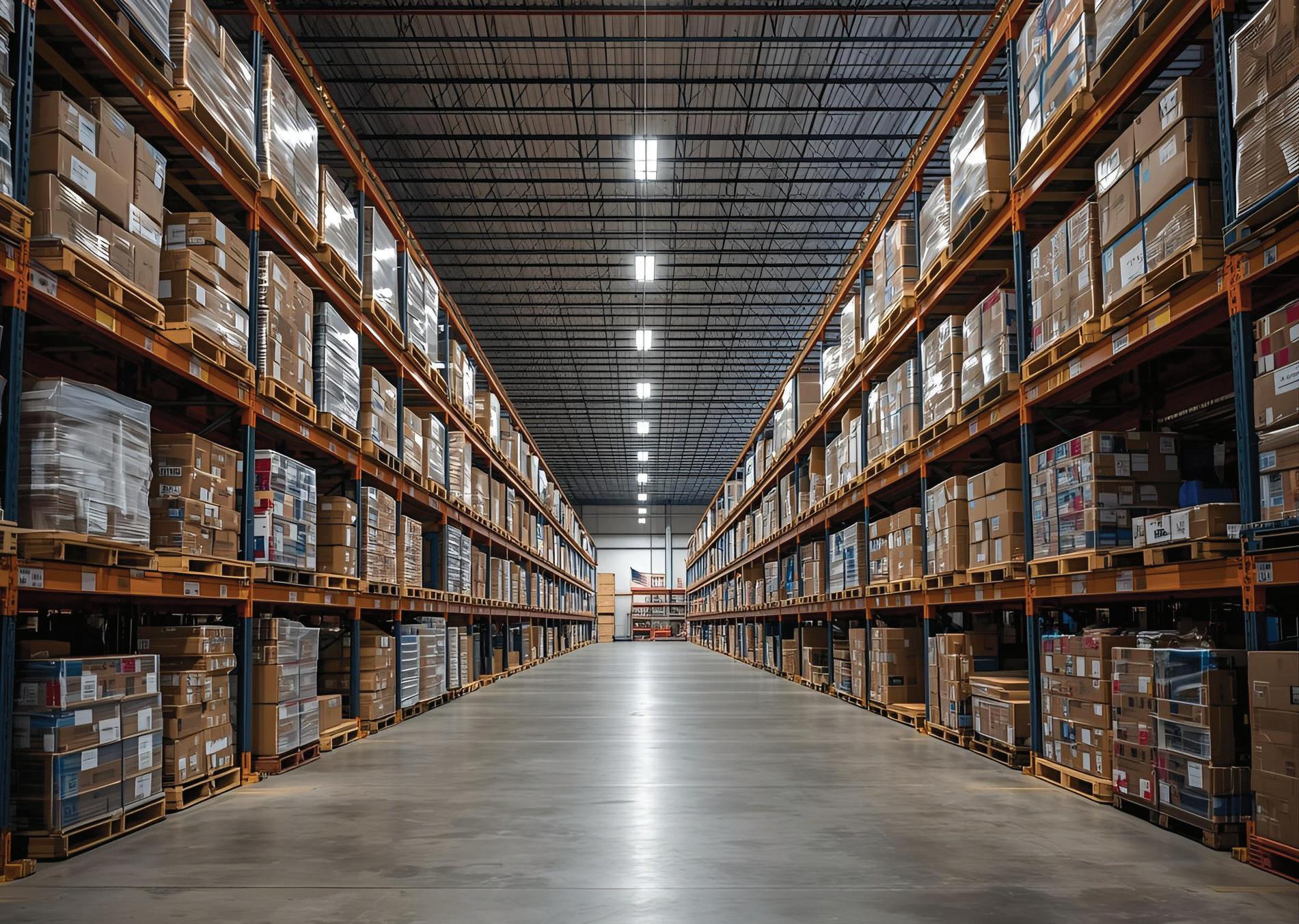

ExpertInterview
U.S.LOGISTICS
REIMAGININGU.S. LOGISTICS:STRATEGIC AUTOMATIONAND WORKFORCE DEVELOPMENTAS CATALYSTSFORNATIONAL COMPETITIVENESS
REIMAGINING U.S. LOGISTICS: STRATEGIC AUTOMATION AND WORKFORCE DEVELOPMENT AS CATALYSTS FOR NATIONAL COMPETITIVENESS
AnaPaulaMontanha,Editor-in-ChiefofHuman CapitalCareerTrendsMagazine,interviewed DaniloDias-COO,InfrastructureExpertand BusinessEditor.Mr.Diassharesinsightsfromhis broadexperienceintheinfrastructuresector.
TheUnitedStateslogisticsandinfrastructuresectors standatacriticalinflectionpoint.Demographicshifts, acceleratedbyanagingworkforceanddeclining interestfromyoungergenerations,haveconverged withunprecedentede-commercedemandtocreate structurallaborshortagesthatthreatenoperational continuityandeconomiccompetitiveness.
TheU.S.BureauofLaborStatisticsreportsthatinJune 2024,thetransportationandwarehousingindustry employed6.6millionworkers,accountingfor approximatelyfivepercentofallprivate-sectorjobs, yetthesectorfacespersistentchallengesin maintainingadequateworkforcelevels(U.S.Bureauof LaborStatistics,2024a).Thislaborcrisisrepresentsa fundamentalmismatchbetweenworkforcecapabilities andevolvingindustryrequirementsinaneradefinedby technologicaltransformationandsupplychain complexity.



Thephysicallydemandingnatureofmanyroles, combinedwithregulatorypressuresonworkinghours andevolvingworkforcepreferencesforflexibility,has createdconditionsdemandingcomprehensivestrategic intervention.Thisarticleexaminesthemultifaceted dimensionsoflaborshortagesinU.S.logisticsand infrastructure,analyzestheireconomicandoperational impacts,andpresentsevidence-basedsolutionsthat integratetechnologicalinnovationwithhumancapital developmenttoensuresustainednational competitiveness.
IndustryTrendsandMarketAnalysis
Thecontemporarylogisticslandscapereflectsa fundamentaltransformationdrivenbydigitalization, automation,andshiftingconsumerbehaviors.The exponentialgrowthofe-commercehasfundamentally altereddemandpatternsandoperationalrequirements. AccordingtotheU.S.CensusBureau,e-commercesales inthesecondquarterof2025accountedfor15.5 percentoftotalretailsales,representingcontinued growthindigitalcommercethatplacesunprecedented strainonlogisticsnetworks(U.S.CensusBureau,2025). Thisshifthasfundamentallychangedthenatureof logisticswork,requiringgreaterflexibility,speed,and precisionthantraditionalmodelscouldaccommodate. Demographicanalysisrevealstroublinglong-term trendsforworkforceavailability.TheAmericanTrucking Associationsestimatesthattheindustryfaceda shortageofapproximately60,000driversin2023,with projectionssuggestingthisgapcouldwiden significantlyiffreightdemandincreases(American TruckingAssociations,2024).TheBureauofLabor Statisticsprojectsthatemploymentintransportation andwarehousingwillgrowby3.0percentfrom2024to 2034,drivenprimarilybyincreasingvolumesofparcel shipmentsanddeliveries,yetrecruitmentchallenges persist(U.S.BureauofLaborStatistics,2024b).The NationalScienceFoundation'sworkforcedataindicates thatwhilethescience,technology,engineering,and mathematicsworkforcecomprises36.8millionworkers —representing24percentoftotalU.S.employment— demandforqualifiedprofessionalsinlogistics technologycontinuestooutpacesupply(National ScienceFoundation,2024).
Interviewby AnaPaulaMontanha,Editor-in-Chief
Technologicalinnovationpresentsbothopportunities andchallenges.ResearchfromtheMITCenterfor TransportationandLogisticsdemonstratesthat artificialintelligencecanaccelerateatleastonetask in83percentoftransportationoccupations,withthe potentialtoaffect1.1millionfull-timetransportation employees(Bouquet&Sheffi,2024).However, successfulautomationimplementationsdependon organizationalreadinessandworkforceadaptation. Companiesviewingautomationasworkforce replacementratherthanworkforceaugmentation frequentlyencounterresistanceandsuboptimal outcomes,whilethoseinvestingintrainingand transitionprogramsachievesuperiorresultsinboth productivityandemployeesatisfaction.
PolicyChangesandWorkforceImpact
Federalandstatepolicyinitiativesincreasingly recognizethestrategicimportanceoflogisticsand infrastructuretoeconomiccompetitiveness.The InfrastructureInvestmentandJobsAct,signedinto lawonNovember15,2021,representsthemost significantfederalcommitmenttoinfrastructure renewalindecades,allocating$550billioninnew infrastructureinvestmentsoverfiveyears (InfrastructureInvestmentandJobsAct,2021). However,thelegislation'ssuccessdependscritically onworkforceavailabilityandcapability,withindustry analystsidentifyinginfrastructureconstruction amongthesectorsmostvulnerabletoskilledlabor shortages.
Workforcedevelopmentpolicieshavebegunshifting towardapprenticeshipprogramsandindustry-led traininginitiatives.ThePortofLosAngeles exemplifiesthisapproachthroughitscommitmentto workforcedevelopment,allocating$4milliontoward planningforajointPortofLosAngelesandPortof LongBeachGoodsMovementWorkforceTraining Facility—whichwouldbecomethefirstworkforce trainingfacilityintheUnitedStatesdedicatedtothe goodsmovementsector(PortofLosAngeles,2024). However,scalingtheseprogramsrequires collaborationamongeducationalinstitutions, industryassociations,andgovernmentagencies— coordinationthathasprovenchallengingtoachieve consistently.
Immigrationpolicysignificantlyimpactsworkforce availability.TheNationalScienceFoundationreports thatforeign-bornworkerscompriseapproximately19 percentoftheoverallU.S.scienceandengineering workforce,withparticularlyhighrepresentationin fieldscrucialforlogisticstechnologydevelopment (NationalScienceFoundation,2024).Changesinvisa programsandenforcementprioritiescreate uncertaintyforemployers,whiledebatesover pathwaystolegalstatusaffectlong-termworkforce planning.
Leadinglogisticsorganizationshaveimplemented innovativeapproachestoaddresslabor constraints.ThePortsofLosAngelesandLong Beachprovideinstructiveexamplesofbalancing automationwithworkforcedevelopment. ResearchfromtheUniversityofCalifornia, Berkeleydemonstratesthatautomationatthese portshasnotreducedoverallemploymentbut rathertransformedjobrequirements.Between 2020and2021,theregisteredInternational LongshoreandWarehouseUnionworkforceinLos AngelesandLongBeachgrew11.2percent comparedto8.4percentforotherWestCoast ports,suggestingthatautomationraiseddemand forskilledworkersratherthaneliminating positions(Nacht&Henry,2022).
Newpositionsatautomatedterminalsrequire longshoreworkerstodevelopskillsindata analysis,softwaredevelopment,andequipment maintenance,competenciesthatcommand highercompensationreflectingincreased productivityandspecializedknowledge.The InternationalLongshoreandWarehouseUnion andPacificMaritimeAssociationestablished MaintenanceandRepairtrainingcentersto providere-skillingandup-skillingprograms, preparingcurrentmechanicsfortechnical educationinmaintainingandrepairingcurrentand futureequipment.Thiscollaborativeapproach demonstrateshowproactivestakeholder engagementcanfacilitatetechnological transitionswhileprotectingworkerinterests.
However,automationremainscontentiousinother contexts.TheUCLALaborCenter's comprehensivestudyrevealedthatindustry stakeholdersidentifiednumerousalternativesto automationforaddressingoperationalchallenges, includingincreasinghoursofoperation,investing ininlandports,enhancingworkertraining programs,andoptimizingexistinginfrastructure (UCLALaborCenter,2023).Theresearch emphasizedthatinsufficientgovernment investment,inefficienciesacrosssupplychain segments,andstringentlocalregulations presentedsignificantchallengesrequiring multifacetedsolutionsbeyondtechnological deploymentalone.
EXPERTPERSPECTIVES:INTERVIEWWITHDANILO DIAS
INTRODUCINGTHEEXPERT
AspartofHumanCapital’songoingserieson executiveleadershipandindustrytransformation, Editor-in-ChiefAnaPaulaMontanhaspeakswith expertsshapingthefutureoftheirfields.DaniloDias servesasChiefRevenueOfficerandBoardAdviserat multipleInfrastructureorganizations,bringing exceptionalbreadthofexperienceacrosslogistics, technology,andinfrastructuresectors.ASloanFellow fromtheMassachusettsInstituteofTechnology,Dias combinesrigorousanalyticalcapabilitieswithpractical operationalexpertisegainedthroughleadership positionsatSITA,SmithsDetection,andVisionBox acrossLatinAmericanmarkets.Asaboardmemberof theBrazilNationalInfrastructureandLogistics EfficiencyCoalition,hecontributesstrategicguidance onenhancingnationalinfrastructureandlogistics systems.Hisbackgroundspanningengineering, finance,marketing,andstrategypositionshim uniquelytoaddressthecomplexchallengesfacing contemporarylogisticsandinfrastructureoperations.

Howisthelogisticsindustryevolving,andwhatarethe biggestchallengesahead?
Thelogisticsindustryfacesafundamental transformationdrivenbytechnologicalcapabilityand changingconsumerexpectations.Digitalplatformsnow enableunprecedentedvisibilityacrosssupplychains, allowingreal-timetrackingandpredictiveanalyticsthat wereinconceivableadecadeago.However,realizingthis potentialrequiresworkforcecapabilitiesthatextendfar beyondtraditionallogisticsskills.Weneedprofessionals whounderstandbothphysicaloperationsanddigital systems,whocaninterpretdataanalyticsandmake informeddecisionsbasedonalgorithmic recommendations.Thebiggestchallengeisnot technologyitselfbutratherdevelopinghumancapital capableofleveragingthesetoolseffectivelywhile maintainingthejudgmentandadaptabilitythat distinguishexceptionallogisticsoperationsfrommerely adequateones.
Whatstrategiesshouldexecutivesadopttostayahead inthischanginglandscape?
Executivesmustrecognizethatcompetitiveadvantage increasinglyderivesfromorganizationallearningand adaptationratherthanstaticoperationalefficiency.This requiresinvestmentincontinuousworkforce development,creatingcultureswhereexperimentation andinnovationareencouraged.Technologyadoption shouldbeviewedstrategically,focusingonareaswhere automationcreatesgenuinevalueratherthanpursuing technologyforitsownsake.TheMITwarehouseresearch emphasizesthatsuccessfuldigitaltransformationfaces twokeychallenges:theneedfordataaccuracyandthe acquisitionoftherighttalent(MITCenterfor Transportation&Logistics,2024).Moreover,executives mustengagemoredeeplywithpolicyprocessesthat shapeinfrastructureinvestmentandworkforce development.Themostsuccessfulorganizationswillbe thosethatbalanceshort-termoperationaldemandswith long-termcapabilitybuilding.
Howdoesgovernmentpolicyimpactindustrygrowth andworkforcedevelopment?
Governmentpolicyprofoundlyinfluenceslogisticsand infrastructurethroughdirectinvestment,regulatory frameworks,andworkforcedevelopmentprograms.The InfrastructureInvestmentandJobsAct's$550billion investmentprovidesessentialcapitalfortransportation networksandfacilities,butimplementationdepends criticallyonpermittingefficiencyandworkforce availability(InfrastructureInvestmentandJobsAct, 2021).Regulatoryapproachestoautomation,data privacy,andlaborstandardsshapethefeasiblesolution spaceforindustryinnovation.Workforcepolicy, particularlyimmigrationreformandvocationaleducation funding,directlyimpactstalentavailability.The challengeisthatpolicycyclesoftenmisalignwith industryneeds,creatinguncertaintythatcomplicates long-termplanning.
Howshouldbusinessesandprofessionalspreparefor thenextdecadeinlogisticsandinfrastructure? Preparationrequiresbothtechnicalskilldevelopment andstrategicthinkingcapability.Professionalsmust developfluencywithdataanalytics,understandinghow tointerpretalgorithmicoutputsandapplyinsightsto operationaldecisions.TheBureauofLaborStatistics projectsthatemploymentoflogisticianswillgrow17 percentfrom2024to2034,muchfasterthanthe averageforalloccupations,drivenbyincreasing complexityinsupplychainsande-commercegrowth (U.S.BureauofLaborStatistics,2024c).Forbusinesses, preparationmeansbuildingorganizationalcapabilities forrapidadaptation,includingflexibleoperational processesandculturesthatencourageexperimentation. Strategicpartnershipsbecomeincreasinglyimportantas nosingleorganizationpossessesallnecessary capabilities.
ComparativeAnalysisandFutureOutlook
Traditionallogisticsmodelsemphasizedcost minimizationthroughstandardizationandscale economies.Contemporarylogisticsincreasinglyrequires flexibilityandresponsiveness,capabilitiesthat sometimesconflictwithtraditionalefficiencymetrics. TheBerkeleyresearchonterminalautomationreveals thatautomatedfacilitiesachievedthroughputof approximately510twenty-footequivalentunitsperacre comparedtoabout350atconventionalterminals, representingsubstantialproductivitygains,yet implementationrequiredyearsofplanningandworker preparation(Nacht&Henry,2022).
Theethicaldimensionsofautomationdeservecareful considerationbeyondpurelyeconomicanalysis.TheMIT researchindicatesthattransportationindustryworkers withonlyahighschooldiplomafacethehighest exposuretoartificialintelligence,raisingequityconcerns aboutthedistributionofautomation'sbenefitsandcosts (Bouquet&Sheffi,2024).Responsibleautomation implementationrequiresattentiontotransitionsupport, retrainingopportunities,andsocialsafetynetsthat cushionadjustmentcosts.
TheU.S.logisticsandinfrastructuresectorsface profoundchallengesthatthreateneconomic competitivenessifleftunaddressed.However,these challengesalsopresentopportunitiesforstrategic renewal.Successrequirescoordinatedactionacross multipledimensions,integratingtechnological innovationwithhumancapitaldevelopmentinwaysthat reinforceratherthanundermineeachother.
Organizationsmustadoptcomprehensiveworkforce strategiesthatviewemployeesasassetsrequiring continuousinvestmentratherthancoststobe minimized.TheNationalScienceFoundationdatareveals thatSTEMworkersearnmediansalariesapproximately $19,100higherthannon-STEMworkers,demonstrating theeconomicvalueofspecializedskills(NationalScience Foundation,2024).
Technologyadoptionshouldfollowstrategiclogic focusedongenuinevaluecreation.Automationexcelsat routine,high-volumetaskswhereconsistencyandspeed createcompetitiveadvantage,buthumanjudgment remainssuperiorforcomplexproblem-solvingand relationshipmanagement.
Policyengagementrepresentsacriticalyetoften neglecteddimensionoforganizationalstrategy. Organizationsthatactivelyparticipateinpolicy processes,providingevidence-basedinputandbuilding constructiverelationshipswithpolicymakers,canhelp shapemorefavorableconditionswhilebuildingsocial licensefortheiroperations.Educationalpartnerships offerpathwaystoaddressworkforcedevelopment challengesatscale.ThePortofLosAngeles'splanned goodsmovementworkforcetrainingfacilityexemplifies thisapproach,creatingdedicatedinfrastructurefor developinglogisticsprofessionals(PortofLosAngeles, 2024).
Thepathforwarddemandsrecognitionthatlabor shortagesinlogisticsandinfrastructurerepresent symptomsofdeeperstructuralchallengesrequiring comprehensivesolutions.Technologicalinnovation alonecannotresolveworkforcechallenges,norcan workforcedevelopmentsucceedwithoutsupporting policyframeworksandorganizationalcommitments.The mostpromisingapproachesintegratemultiple interventionsintocoherentstrategiesthataddressroot causesratherthanmerelytreatingsymptoms. Organizationsandleaderswhoembracethiscomplexity, investinginbothtechnologicalandhumancapabilities whileengagingconstructivelywithpolicyprocesses,will positionthemselvesandthebroaderindustryfor sustainedsuccessinanincreasinglychallenging environment.
Interviewby AnaPaulaMontanha,Editor-in-Chief
References
AmericanTruckingAssociations.(2024).Laborand workforcedevelopment. https://www.trucking.org/labor-and-workforcedevelopment
Bouquet,P.,&Sheffi,Y.(2024).AIandthe transportationworkforce.MITCenterforTransportation &Logistics.https://mitsloan.mit.edu/ideas-made-tomatter/which-transportation-workers-will-be-mostimpacted-ai InfrastructureInvestmentandJobsAct,Pub.L.No.11758,135Stat.429(2021).
https://www.govinfo.gov/app/details/PLAW-117publ58
MITCenterforTransportation&Logistics.(2024).The warehouseofthefuture[PDF].MassachusettsInstitute ofTechnology.
https://ctl.mit.edu/sites/ctl.mit.edu/files/202403/The%20Warehouse%20of%20the%20Future.pdf
Nacht,M.,&Henry,D.(2022).Terminalautomationin SouthernCalifornia:Implicationsforgrowth,jobs,and thefuturecompetitivenessofWestCoastports. GoldmanSchoolofPublicPolicy,Universityof California,Berkeley.
https://gspp.berkeley.edu/assets/uploads/research/ pdf/Nacht_and_Henry_Automation_Report_FINAL_w_ page_numbers.pdf
NationalScienceFoundation,NationalCenterfor ScienceandEngineeringStatistics.(2024).The STEMlaborforce:Scientists,engineers,andskilled technicalworkers(NSB-2024-5).
https://ncses.nsf.gov/pubs/nsb20245
PortofLosAngeles.(2024,June6).LosAngeles HarborCommissionapproves$2.6billionportbudget forfiscalyear2024/25[Pressrelease].
https://www.portoflosangeles.org/references/2024news-releases/news_060624_budget
UCLALaborCenter.(2023).Automationandthe futureofdockworkattheSanPedroBayPort Complex.UniversityofCalifornia,LosAngeles. https://labor.ucla.edu/publications/automationfuture-dockwork-san-pedro-bay-port-complex/
U.S.BureauofLaborStatistics.(2024a).Keeping Americamoving:Employmentintransportationand warehousingindustries[SpotlightonStatistics].U.S. DepartmentofLabor.
https://www.bls.gov/spotlight/2024/keepingamerica-moving-employment-in-transportationand-warehousing-industries/home.htm
U.S.BureauofLaborStatistics.(2024b).Employment projections:2024-2034(USDL-25-1324).U.S. DepartmentofLabor.
https://www.bls.gov/news.release/pdf/ecopro.pdf
U.S.BureauofLaborStatistics.(2024c).Logisticians. InOccupationaloutlookhandbook.U.S.Department ofLabor.https://www.bls.gov/ooh/business-andfinancial/logisticians.htm
U.S.CensusBureau.(2025).Quarterlyretailecommercesales:2ndquarter2025.U.S.Department ofCommerce.
https://www.census.gov/retail/mrts/www/data/pdf/ ec_current.pdf
